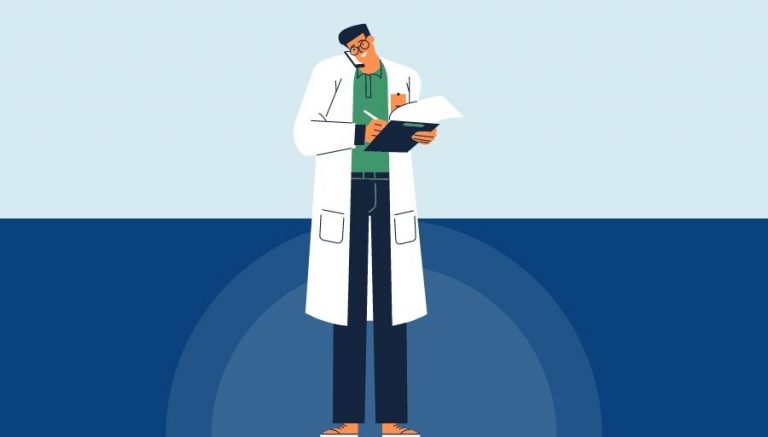How To Use CPT Code 32855
CPT 32855 describes the backbench standard preparation of a single donor lung allograft prior to transplantation. This article will cover the description, procedure, qualifying circumstances, appropriate usage, documentation requirements, billing guidelines, historical information and billing examples.
1. What is CPT Code 32855?
CPT 32855 can be used to describe the backbench standard preparation of a single donor lung allograft before it is transplanted into a patient. This code is used when the healthcare provider performs the necessary dissection of the allograft from surrounding soft tissues to prepare the pulmonary venous/atrial cuff, pulmonary artery, and bronchus of the lung.
2. Official Description
The official description of CPT code 32855 is: ‘Backbench standard preparation of cadaver donor lung allograft prior to transplantation, including dissection of allograft from surrounding soft tissues to prepare pulmonary venous/atrial cuff, pulmonary artery, and bronchus; unilateral.’
3. Procedure
- The healthcare provider receives the cold preserved lung allograft and places it on a sterile table, keeping it in the preservation solution.
- They inspect the lung for suitability and begin the bench preparation by separating the upper and lower lobes.
- The provider examines the lung to determine the direction and completeness of the division of the lobes and to identify any abnormalities or injuries not noticed prior to procurement.
- They continue to inspect the lung, dissecting any residual soft tissue from the aorta and paying special attention to the pulmonary venous/atrial cuff, pulmonary artery, and bronchus.
- Upon removal of all residual soft tissue, the provider prepares the vessels for implantation, examining the small vessels crossing the fissure and clipping and dividing any as necessary for transplantation.
4. Qualifying circumstances
CPT 32855 is performed when a healthcare provider prepares a single donor lung allograft for transplantation. This code is specific to a unilateral service, meaning it is used when only one lung is being prepared. If the provider performs a bilateral service, a different code should be used.
5. When to use CPT code 32855
CPT code 32855 should be used when a healthcare provider performs the backbench standard preparation of a single donor lung allograft prior to transplantation. It is important to note that this code is specific to a unilateral procedure and should not be used for bilateral lung preparations.
6. Documentation requirements
To support a claim for CPT code 32855, the healthcare provider must document the following information:
- Details of the backbench standard preparation performed on the lung allograft
- Date and time of the procedure
- Any abnormalities or injuries identified during the inspection
- Specific vessels prepared for implantation
- Signature of the healthcare provider performing the service
7. Billing guidelines
When billing for CPT code 32855, ensure that the healthcare provider is performing the backbench standard preparation of a single donor lung allograft. This code is specific to a unilateral procedure, so it should not be reported if a bilateral service is performed. It is important to follow any additional guidelines provided by the payer when submitting the claim.
8. Historical information
CPT code 32855 was added to the Current Procedural Terminology system on January 1, 2005. In 2017, it was added to the Inpatient Only (IPO) list for Medicare.
9. Examples
- A thoracic surgeon performing the backbench standard preparation of a single donor lung allograft prior to transplantation.
- A cardiothoracic surgeon dissecting the allograft from surrounding soft tissues to prepare the pulmonary venous/atrial cuff, pulmonary artery, and bronchus of a lung for transplantation.
- A transplant surgeon inspecting a lung allograft for suitability and performing the necessary dissection before implantation.
- A surgical team preparing a single donor lung for transplantation by separating the upper and lower lobes and examining the lung for any abnormalities or injuries.
- A healthcare provider dissecting the allograft from surrounding soft tissues and preparing the vessels for implantation during the backbench standard preparation of a lung allograft.
- A thoracic surgeon performing the necessary dissection of a single donor lung allograft to prepare it for transplantation.
- A transplant surgeon examining a lung allograft and preparing the pulmonary venous/atrial cuff, pulmonary artery, and bronchus for implantation.
- A cardiothoracic surgeon preparing a single donor lung for transplantation by removing residual soft tissue and preparing the vessels for implantation.
- A surgical team performing the backbench standard preparation of a lung allograft, ensuring its suitability for transplantation.
- A healthcare provider dissecting the allograft from surrounding soft tissues and preparing the pulmonary venous/atrial cuff, pulmonary artery, and bronchus of a single donor lung for implantation.


